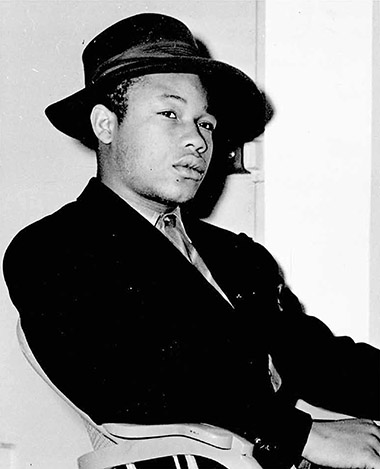ALBANY, LINN COUNTY; 1940s:
Top suspect became star witness in ‘railroad job’
Audio version: Download MP3 or use controls below:
|

Wilson, it turned out, had been released from the brig the day he boarded the train in Washington; he’d been locked up there for an alleged sexual assault. His commanding officer was sending him to a combat unit, in the same way misbehaving German soldiers were sent to the Eastern Front. He might very well have been thinking this train trip would be his last few hours of freedom. And the witnesses’ accounts dovetail perfectly with an attempted sexual-assault-at-knifepoint gone wrong. Each remembers the words slightly differently, but most agree it started with a woman saying, “I can’t stand this any longer!” followed by, “He’s killing me!” and a horrible scream. Sleep-fogged passengers poked their heads out of the curtains to see Wilson already bending over the still-bleeding body. Then one of the passengers pulled the cord to summon the steward, and it was only after that bell rang that Wilson started shouting that murder had been done. Wilson’s story started out sketchy and changed almost every time he retold it. First he claimed to have run to the end of the train in pursuit of the killer and seen no one; then, when a trainman replied that he had to have seen at the very least a cook, a waiter and a steward, he changed his story to include all three of those characters. He miscounted the number of cars he ran through and then said maybe he hadn’t made it to the back of the train after all (although one source says a blood trail was found leading to the end of the train). He claimed it took him nine steps to get to the end of the car in pursuit, when he was less than 6 feet from it. On the witness stand, he was unable even to identify his military unit. And one of the witnesses recalls him actually trying to plant a bloody towel in the bathroom between the murder scene and the cook’s car. But in court, the prosecution seemed to fight desperately to avoid even considering the possibility that Wilson had any role in the murder other than that of too-late would-be-rescuer. The railroad ordered its employees not to cooperate with Folkes’ defense attorney. And the prosecution even constructed, in an Albany railroad yard, a life-size diorama of the murder train — except it had been modified so that the cook’s car, in which Folkes was working, was one car away from the murder car instead of five or six. So, why turn a blind eye to such a promising suspect and focus all energy on pinning the job on a man with a pretty decent alibi, and against whom the only evidence is guesswork, tainted and shifting testimony from Wilson, and an unsigned and probably coerced confession extracted from him by what was then one of the most notoriously brutal police departments in the country? The most likely answer is that, for every authority involved, Folkes’ conviction represented salvation from consequences ranging from inconvenience to catastrophe. We’ll talk about those consequences in Part Three of this three-part series.
|
Background photo is a hand-tinted image of Cape Disappointment Lighthouse at the mouth of the Columbia River, published circa 1910 on a picture postcard.
Scroll sideways to move the article aside for a better view.
Looking for more?
On our Sortable Master Directory you can search by keywords, locations, or historical timeframes. Hover your mouse over the headlines to read the first few paragraphs (or a summary of the story) in a pop-up box.
... or ...

©2008-2016 by Finn J.D. John. Copyright assertion does not apply to assets that are in the public domain or are used by permission.
